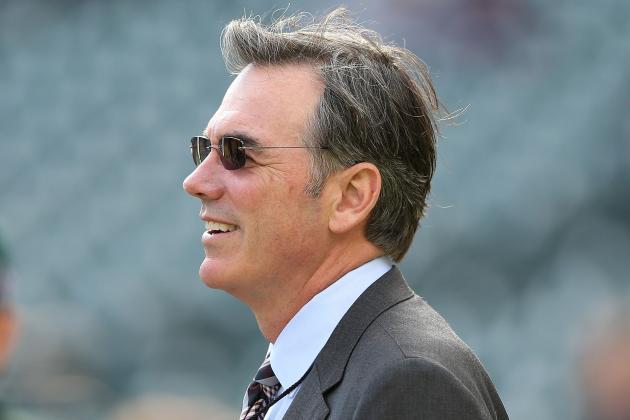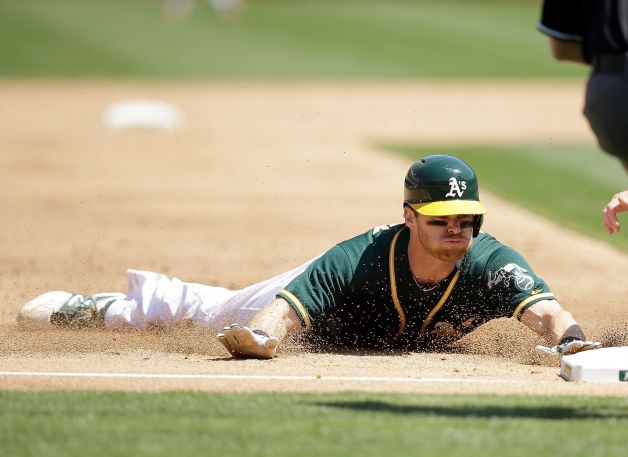Platoon: An Oakland Athletics Story
General Manager Billy Beane cemented his early legacy in baseball after the release of Michael Lewis’ best-selling Moneyball chronicled his use of sabermetrics to assemble a winning team in financially burdened Oakland in the early 2000s.
This season, as of May 19, his team is perched atop the talent-heavy AL West and tied for the most wins in baseball with 28.
Is he doing something different this year? The rest of the league quickly adopted his use of new-age statistics to reevaluate the value of their players. Previously, Beane may have been able to swoop on under-the-radar journeymen like Scott Hatteberg, but with the likes of the Yankees and Dodgers in the loop, it’s likely that he would be overpaid to play in one of the larger markets today.

In recent history, superstars have been expected to perform day-in, day-out, while performing at the same high-level in all circumstances. Where this goes wrong, is that most hitters are very situationally driven. Primarily, batters favor pitching from one side, often opposite of the side they bat.
The A’s platoon in centerfield alternates switch-hitting Coco Crisp and right-handed Craig Gentry. Both have started over 20 games in center, though Gentry’s prime window of opportunity came when Crisp missed seven games due to a neck injury.
Gentry has more at-bats against left-handed pitchers than Crisp, while Crisp has started significantly more against righties.
Crisp, as a gifted switch-hitter, bats for about the same average against both lefties and righties, but works significantly more walks against righties as evidenced by an on-base percentage nearly 40 points higher. The biggest difference however, is seen in Crisp’s power. It shows a significant decrease against left-handed pitching, where his slugging percentage drops by a full 80 points to a mere .333.
Crisp’s OPS (a summative statistic of OBP and SLG) proves the most telling. His .785 clip against right-handed pitching is nearly 120 points higher than against lefties.
Gentry, on the other hand, hits lefties for significantly more power than righties, posting a .400 SLG against southpaws. Though his OBP decreases notably from righties to lefties, his power more than makes up for it with an OPS more than 50 points higher against left-handed pitchers.

According to an essay by baseball statistician Bill James, an OPS above .7667 qualifies a player as “above average.”
For comparison, Los Angeles Angels of Anaheim CF Mike Trout, highly regarded as the best hitter in baseball, boasts a .875 OPS for the 2014 season. Trout recently signed a contract that will net him just over $24 million annually over the next six years.
Crisp is currently making $7.5 million on a club option with the Oakland in 2014. Gentry is signed for one-year and $1.15 million.
Trout is one of the best pure hitters in the game, and that shouldn’t be taken away from him. And with annual revenues ballooning for Major League Baseball, owners are able to pay exorbitant salaries for top-tier talent and still make vast financial gains.
However, there’s an argument that over $15 million for an extra 100 OPS points seems excessive.
There are dozens of justifications and hundreds of other statistics that would show why Trout is worth the extra money. Age, for example is a huge factor. Crisp and Gentry are both over 30 years old while Trout will turn 23 this August and will likely improve in the coming years.
OPS is only one small example in the vast world of sabermetrics. Beane isn’t building a winning ball club around one statistic. However, his platoon system has Oakland’s $82 million roster leading the AL West in front of an Angels lineup featuring three individual salaries over $24 million per year (Trout, Albert Pujols, and Josh Hamilton).
Maybe Bennett Miller and Oliver Stone will get together for the next blockbuster film: “Moneyball II: Platoon.”
“The first casualty of platoons is superstardom.”



